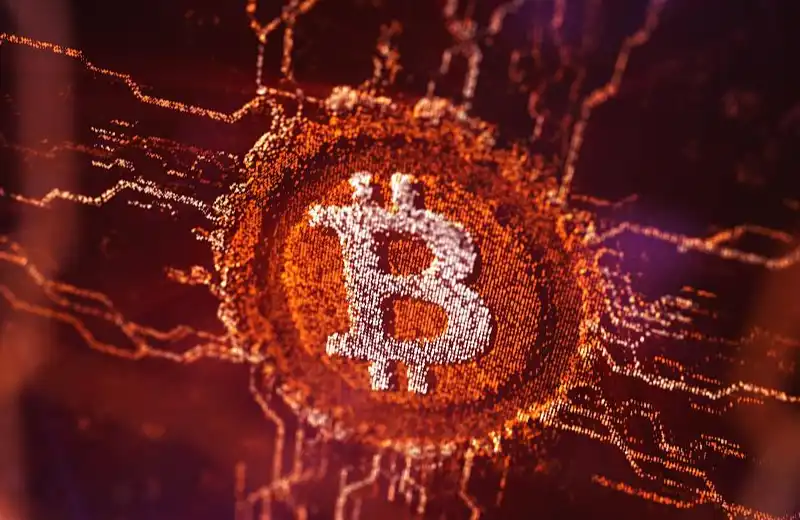Meme logic is not suitable for Base?
Original title: "Speculative Swells and the Memecoin Aftermath"
Original author: Stanford Blockchain Club
Original translation: Peisen, BlockBeats
Editor's note:
Using the Base network as an example, this paper deeply explores how the launch of the meme coin BRETT in early 2024 triggered a significant market event, leading to a shift in user behavior and trading patterns. Through the analysis of supply and demand, the study reveals the subtle interaction between rising gas fees and trading activities, demonstrating the profound impact of this catalyst event on network users.
This paper not only quantifies the impact of the BRETT event on trading behavior through a regression model, but also further explores how this external shock amplifies users' sensitivity to transaction costs, leading to a sharp drop in demand. This phenomenon reflects the vulnerability of blockchain networks in the face of unexpected events and their rapidly changing nature.
Introduction
For most people, unexpected disruptions to supply chains offer little benefit. For researchers, however, these disruptions provide valuable opportunities to understand market dynamics that are difficult to disentangle under normal circumstances. For example, because prices and quantities are direct manifestations of supply and demand, it can be difficult to tell whether supply, demand, or both are influencing markets. This leads to the old saying, “Don’t reason from price changes alone.” But when one of these factors suddenly changes in a predictable way, sometimes you can draw conclusions from it.

For example, a study from the NBER used the supply shock caused by COVID-19 to understand demand dynamics, showing how such sudden external shocks can be a significant redistributive force affecting employment and sales in the U.S. economy. By analyzing behavioral changes during rare market events, researchers are able to turn crises into opportunities for deep economic insights.
Blockchain networks operate with inherent capacity limitations similar to production lines. Each block has a fixed capacity for transaction data, making space a scarce resource. As transaction demand increases, competition for block space increases, which can lead to network congestion.
In March, Ethereum implemented the EIP-4844 proposal, which aims to increase network capacity and reduce Layer-2 transaction costs, allowing networks like Arbitrum and Optimism to enjoy significant gas fee reductions. However, shortly after the proposal was implemented, the Base network's gas prices surged, exceeding the level before the introduction of EIP-4844.

During this period, Base's user activity increased significantly, mainly driven by DeFi trading activity. This surge was particularly unexpected given that Base's ecosystem has always been inclined towards consumer-oriented applications. Originally incubated by the Coinbase team, Base has benefited from extensive marketing and branding efforts to build a chain that encourages creators, developers, and community participation. As a result, the ecosystem is mainly composed of consumer applications, and the most successful applications, such as Friend.tech, are consumer-oriented.

The reversal in Base user activity and the sudden surge in trading volume can be attributed to supply shocks triggered by unexpected external events, which affect the system's supply chain. Such shocks can significantly change availability and costs, fundamentally changing user behavior and network dynamics.
Catalyst Hunting
To constitute a true supply shock, the event must be exogenous, unexpected, and powerful enough to disrupt established market dynamics.
One of the most notable changes after the implementation of the EIP-4844 proposal was the sudden increase in trading volume on decentralized exchanges (DEXs), which has expanded beyond typical stablecoins and ETH to new token categories. Previously, trading on the Base network was mainly concentrated in these categories, with meme coins accounting for an average of less than 15% of all DEX weekly trading volume.

Historically, meme coin crazes are often triggered by a "beacon" token that attracts significant market interest and sets a new trading benchmark. This phenomenon is likely driven by factors such as information waterfalls. On platforms such as Crypto Twitter, successful trading stories are amplified, while failures are often ignored, leading to a distorted perception of potential gains. When traders observe and imitate the behavior of others, assuming that they have valuable information, a self-reinforcing cycle is formed. This can quickly drive up the price of meme coins and often lead to wild market fluctuations.
For example, in late 2023 on Solana, the market cap of the dogwifhat (WIF) token soared from less than $1 million to billions of dollars in a matter of months. The success of WIF sparked a meme coin frenzy on Solana, with an increase in meme coin issuance and the development of meme coin infrastructure.

Although meme coins have existed since the launch of the Base network, no meme coin had attracted widespread market attention until March of this year. The initial launch of the Base mainnet was driven by a meme coin trading frenzy. Thousands of users flocked to Base to trade meme coins before the network officially launched. As new applications were launched, trading activity for these tokens gradually decreased. Inspired by the character from the popular Pepe-themed books, the BRETT token was launched in late February-early March and quickly rose to prominence on Base, reaching a market cap of $350 million before the onset of large-scale meme trading activity. Its rapid rise not only deviated from typical market trends, but also triggered a broader trading frenzy across the network.
The initial success of the BRETT token attracted speculative traders through a potential copycat effect, attracting a new group of users who were more focused on meme trading rather than participating in the network's applications. While this group has a narrower focus, it is worth exploring the ripple effects of this meme craze on the existing user base of the Base ecosystem, specifically how their typical behaviors changed as a result of this event. While it is impossible to confirm from surface data alone that the observed congestion was directly caused by the BRETT token event, it prompted us to conduct further more detailed analysis to accurately assess its direct impact on user behavior and demand.
Experimental Design
The primary goal of this experiment is to analyze the supply and demand dynamics on the Base network, focusing on the interaction between gas fees (supply) and transaction activity (demand) before, during, and after the BRETT event. A key part of this analysis is to separate the impact of the BRETT launch from general market behavior.
In order to gain clear insights into market dynamics, we will exclude transaction activity directly related to the BRETT token. Our analysis will focus on addresses that were active before the token was launched in late February, allowing us to assess a continuous user base that has not been affected by speculative interest in new tokens. This approach ensures that our study of broader user behavior on the Base network is unbiased and is not disproportionately affected by users who are primarily focused on BRETT.
Model Design
In this study, we used a regression model with a core binary variable to analyze the impact of the BRETT launch. The variables in the model and their functions were selected to reflect the subtle impact of this market event.
The model is defined as follows:

Where:
· Average Gas Usage (Q): represents the average Gas usage at time, which is a key indicator of transaction complexity and network load.
· Impact Indicator (D): A binary variable that indicates whether the BRETT token event occurred (0 before launch and 1 after launch).
· Gas Fee (P): represents the Gas price at time, in gwei.
· Interaction term (DP): used to capture the interactive effect between the BRETT shock and gas prices.
· Transaction number (T): represents the number of transactions at time, used to understand how changes in transaction volume affect network congestion and gas usage.
It is important to note that this model is relatively simple in its current form and is mainly used to reveal changes in demand associated with this specific catalyst. The model does not account for endogeneity that may come from baseline conditions or other underlying trends, which may obscure the true causal relationship and demand elasticity before the event. For example, there may be omitted variables and there may be simultaneous causality between gas usage and fees, which, together with other noise, may affect the accuracy of our initial estimates.
Nonetheless, the model allows us to determine whether the BRETT shock has led to a significant change in transaction behavior on the Base network that is independent of direct BRETT transaction activity.
Regression Results
By analyzing the hourly non-BRETT related user groups from early January to late May 2024, we can draw the following conclusions about the launch of the BRETT token and its first surge:

After the launch of the BRETT token, users showed a significant behavioral shift in the face of rising Gas prices. The regression model shows a significant negative interaction term (₃=−0.333), which indicates that the increase in Gas fees after the token launch is likely to have suppressed users' trading behavior.
Specifically, the interaction term suggests that after the meme event, for every one standard deviation increase in gas price (Δ=1.2×10⁵ gwei), gas usage (Δ) will decrease by 41,200 gwei, equivalent to 79% of the typical hourly standard deviation. In other words, the model predicts that during high congestion events, demand will decrease by approximately 0.79 standard deviations for every one standard deviation increase in gas price.
Overall, the introduction of the meme coin "beacon" BRETT had a negative ripple effect on Base's initial user base. The catalyst-induced congestion increased this group's sensitivity to gas price increases, making them more averse to transaction costs - even when these costs were close to pre-EIP-4844 levels.
Zooming in
BRETT's impact on Base illustrates a broader range of vulnerabilities in the crypto ecosystem and the adaptive behavior of users. This event highlights how emerging tokens, especially unexpected events, can significantly impact transaction metrics, user behavior, and network stability, demonstrating the rapidity of dynamic change within blockchain’s operating framework.
This event highlights the nuanced relationship between supply (in this case, network fees) and user demand, which is not a simple linear relationship. Demand can shift suddenly, as in the BRETT event, or evolve gradually as an ecosystem matures. These shifts highlight the complex interplay between network adjustments and user reactions, which are not always predictable and can vary widely in response to external shocks or anticipated network upgrades.
Looking forward, as more exogenous events or known upgrades occur, understanding these fundamental dynamics becomes critical. Identifying patterns and potential user reactions to changes within the ecosystem can help predict more realistic user dynamics and reactions.
Original link
Welcome to join the official BlockBeats community:
Telegram Subscription Group: https://t.me/theblockbeats
Telegram Discussion Group: https://t.me/BlockBeats_App
Official Twitter Account: https://twitter.com/BlockBeatsAsia


 Forum
Forum Finance
Finance
 Specials
Specials
 On-chain Eco
On-chain Eco
 Entry
Entry
 Podcasts
Podcasts
 Activities
Activities
 OPRR
OPRR








